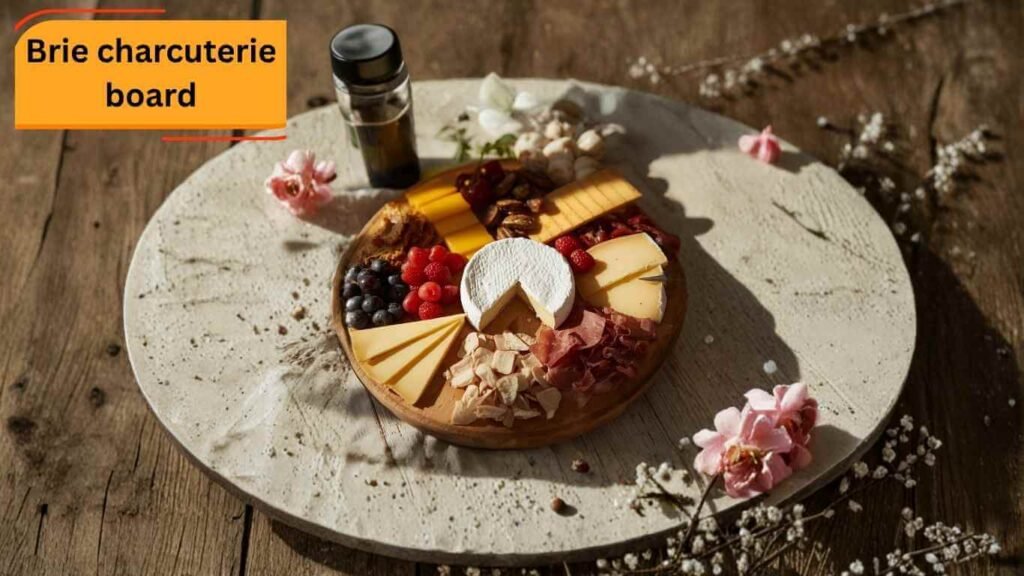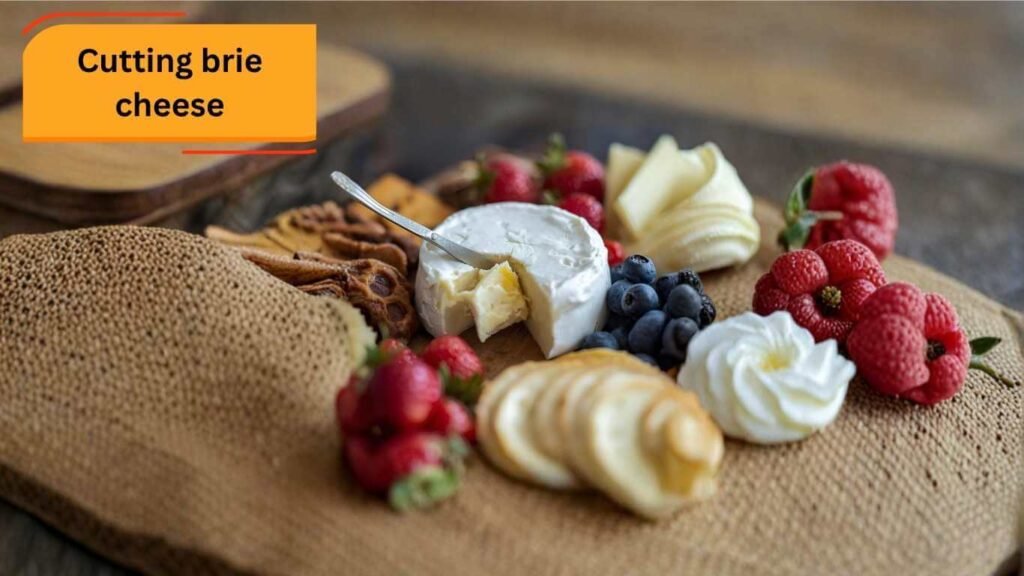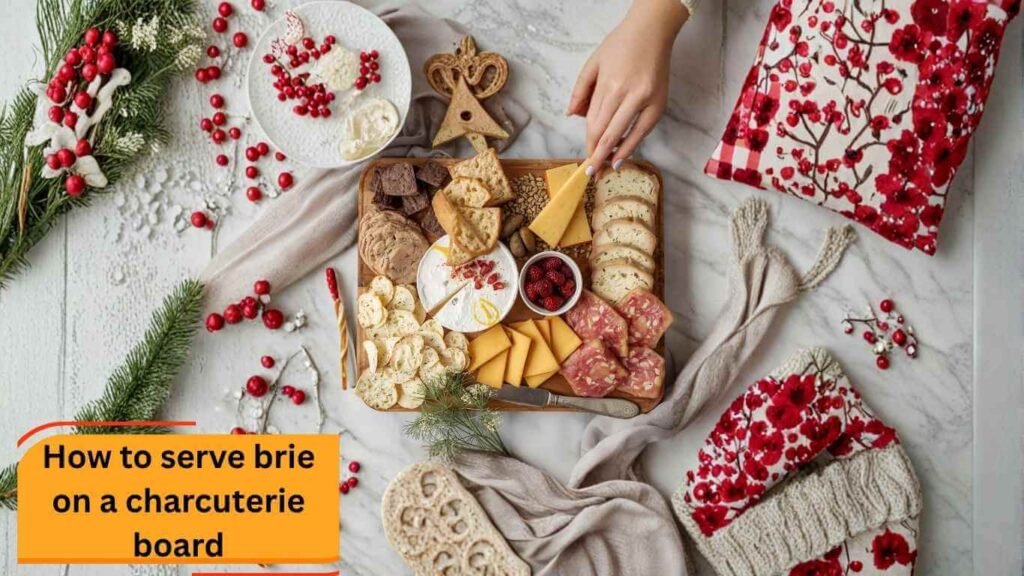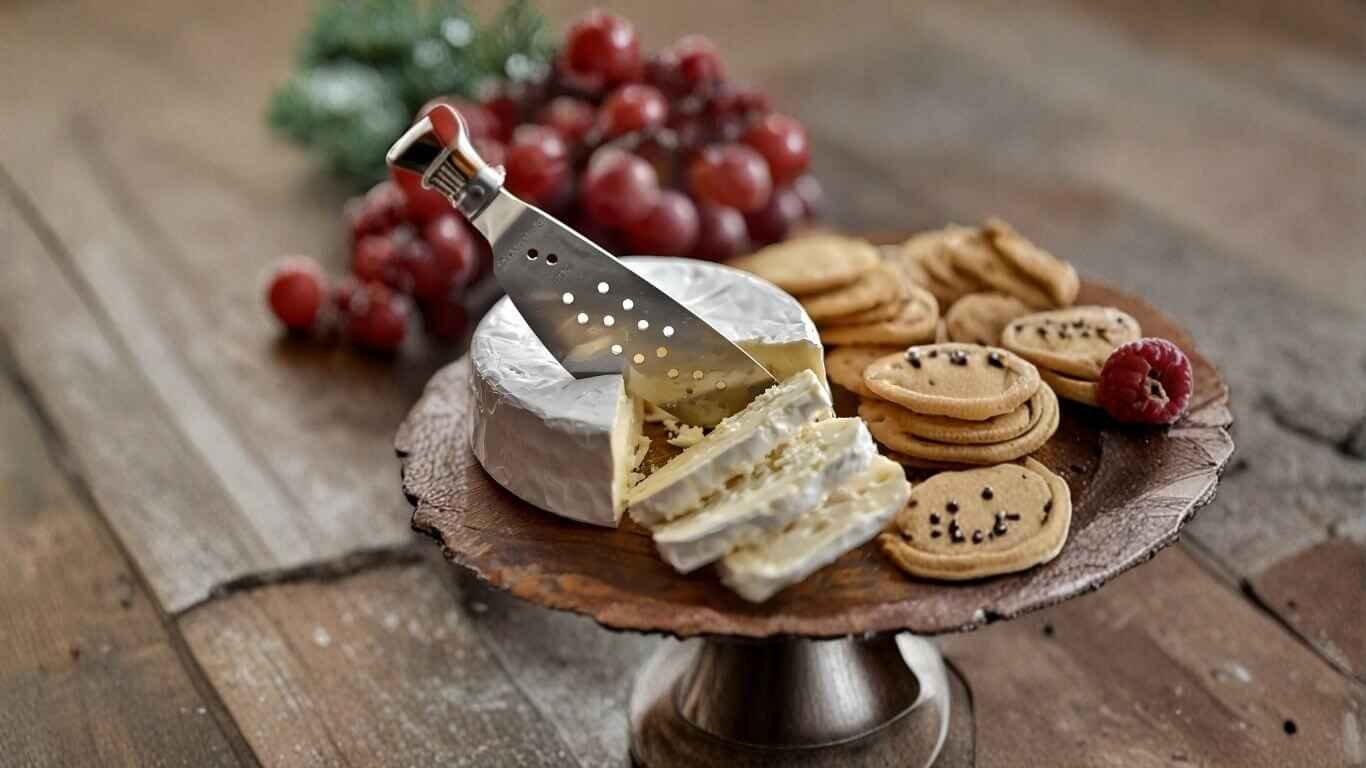Brie is often called the “Queen of Cheeses,” and for good reason. With its rich history rooted in French cheesemaking, this soft-ripened cow’s milk cheese has a famously creamy texture and a mild, buttery flavor that captivates palates worldwide. Its snowy, edible rind and gooey interior make it a stunning centerpiece and a crowd-pleasing favorite on any platter. That’s why learning how to serve Brie on a charcuterie board is an essential skill for any host.
This guide will walk you through the most elegant, creative, and practical ways to showcase Brie at your next gathering. From preparation and cutting techniques to perfect pairings, you’ll discover how to transform a simple wheel of cheese into a memorable culinary experience. Get ready to build a Brie charcuterie board that looks as incredible as it tastes.
Why Brie Is the Perfect Charcuterie Board Cheese
Not all cheeses are created equal when it comes to a charcuterie board, but Brie consistently stands out. Its unique characteristics make it an ideal anchor for a well-rounded and visually appealing spread. It offers a luxurious experience without overpowering the other elements on the board.
Brie’s Flavor, Texture, and Pairing Power
The magic of Brie lies in its dual texture. The soft, almost liquid interior provides a lush, creamy mouthfeel, while the edible bloomy rind offers a slightly firmer, earthy counterpoint. This combination makes each bite interesting. Its flavor is mild and buttery, with subtle nutty and fruity notes that evolve as the cheese ages.
This gentle flavor profile makes Brie incredibly versatile. It acts as a perfect canvas for both sweet and savory accompaniments. A drizzle of honey or a dollop of fig jam brings out its sweetness, while savory pairings like cured meats or olive tapenade highlight its rich, earthy undertones. This adaptability ensures it complements nearly everything on your board.
How to Prep Brie for Your Charcuterie Board
Proper preparation is key to unlocking Brie’s full flavor and texture. Whether you serve it chilled, at room temperature, or warm and gooey, a little planning goes a long way. Deciding how to present it depends on the atmosphere you want to create and the pairings you’ve chosen.
Chilled, Room Temperature, or Baked?
The temperature at which you serve Brie dramatically affects its taste and consistency. Here’s how to choose the best method for your occasion:
- Chilled: Serving Brie straight from the refrigerator is generally not recommended, as the cold mutes its delicate flavors and keeps the texture firm. The only exception is if you need to pre-slice it, as a firm, cold wheel is much easier to cut cleanly.
- Room Temperature: This is the ideal serving temperature for most charcuterie boards. Allowing the cheese to sit out for about 30 to 60 minutes before serving lets it soften naturally. This brings out its full flavor profile and achieves that signature luscious, creamy texture.
- Baked: For a truly decadent centerpiece, a baked Brie charcuterie board is unbeatable. Encased in its rind, the cheese becomes a molten pool of deliciousness perfect for dipping. To prepare, simply place the wheel on a parchment-lined baking sheet, top it with your favorite jam, nuts, or honey, and bake at 350°F (175°C) for 10-15 minutes until the center is soft and gooey.
To serve Brie at its best, remove it from the refrigerator about an hour before your guests arrive. Let it rest on the counter, and you’ll be rewarded with a perfectly creamy and flavorful cheese.
How to Cut and Arrange Brie for Maximum Appeal
Presentation is everything when building a beautiful charcuterie board. How you cut and place your Brie can elevate the entire spread, making it more inviting and easier for guests to enjoy. Serving Brie on a charcuterie board involves both art and strategy.
Cutting Techniques for Easy Serving
While you can place a whole wheel on the board, pre-cutting it makes serving much simpler for your guests.
- The “Cake Slice” Method: This is the most popular technique for cutting Brie for a cheese board. Slice the wheel into small, triangular wedges, just like a cake. You can then fan the wedges out in a circular or semi-circular pattern. This looks elegant and makes it easy for guests to grab a piece without fumbling with a knife.
- Leave the Rind Intact: The rind is edible and helps each wedge hold its shape. When you cut the Brie, leave the rind on. It provides structure and adds to the cheese’s complex flavor.
- Serve it Whole: For a more rustic or interactive feel, you can serve the wheel whole. Just be sure to place a dedicated cheese knife next to it. This encourages guests to cut their own portion, but be prepared for the first slice to be a bit messy.
Placement and Board Styling Tips
Where you place the Brie sets the stage for the rest of your board.
- Create a Focal Point: Position the Brie as a “hero” cheese. Place the wheel or the fanned-out wedges either in the center of the board or slightly off-center. This immediately draws the eye and creates an anchor point to build around.
- Surround with Color and Texture: Arrange your accompaniments around the Brie. Create “rivers” of crackers, piles of colorful fruits like red grapes and green apple slices, and small bowls of jams and nuts. This not only looks beautiful but also suggests pairings to your guests.
- Garnish for a Final Touch: A few sprigs of fresh rosemary or thyme tucked next to the Brie add a pop of green and a fragrant aroma. Edible flowers can also add a touch of whimsy and elegance.

The Best Pairings and Accompaniments for Brie
Pairing is where you can get truly creative. The goal is to offer a mix of flavors, textures, and colors that complement the creamy richness of the Brie. Here are some classic and inventive ideas for what to serve with Brie.
Fruits (Fresh and Dried)
Fruit provides a sweet and often tart contrast to Brie’s creamy flavor.
- Fresh: Sliced apples (Granny Smith or Honeycrisp), pears (Anjou or Bosc), red and green grapes, and fresh figs are excellent choices. Berries like raspberries and blackberries also add a beautiful splash of color.
- Dried: Dried apricots, cherries, and thinly sliced dried oranges offer a more concentrated sweetness and a chewy texture.
Bread, Crackers, and Flatbreads
You need a sturdy vehicle for scooping up all that creamy goodness.
- Breads: The best bread for Brie is often a crusty baguette, sliced and lightly toasted. Sourdough toasts also work well.
- Crackers: Choose a variety of crackers, such as buttery crisps, seeded flatbreads, or simple water crackers that won’t compete with the cheese’s flavor.
Jams, Honey, and Savory Spreads
Spreads add an intense burst of flavor that cuts through the richness of the Brie.
- Sweet: Fig jam is a classic pairing, but raspberry, marionberry, or apricot jam is also delicious. A drizzle of raw honey over the wheel is simple yet divine.
- Savory: For a different profile, try olive tapenade, red pepper jelly, or a dollop of grainy mustard.
Meats, Nuts, and Garnishes
These elements add savory depth and crunchy texture to your board.
- Meats: Thinly sliced prosciutto, salami, or soppressata provide a salty, savory balance. Crispy bacon bits sprinkled over a baked Brie are also a crowd-pleaser.
- Nuts: Toasted almonds, candied pecans, or walnuts add a welcome crunch.
- Garnishes: Fresh herbs like rosemary, thyme, or even basil add an aromatic and visual finishing touch.

Pro Tips for Serving Brie on a Charcuterie Board
A few extra details can take your Brie presentation from good to great.
- Always Include a Dedicated Knife: Provide a small cheese knife or spreader specifically for the Brie. This prevents flavors from mixing and keeps the board looking neat.
- Pre-Cut for Convenience: For larger gatherings, pre-cutting at least some of the Brie into wedges makes it easier for guests to serve themselves and helps with portion control.
- Offer Sweet and Savory Options: The best boards offer variety. Ensure you have a mix of sweet pairings (like fruit and honey) and savory ones (like meats and olives) to please every guest.
- Play with Shapes and Textures: A visually stunning board includes a variety of shapes and textures. Contrast the round wheel of Brie with rectangular crackers, piles of nuts, and flowing arrangements of fruit.
Frequently Asked Questions (FAQ)
Is the rind on Brie edible—and should you serve it?
Yes, the rind is completely edible! It’s a key part of the Brie experience, adding a subtle earthy flavor and textural contrast. Always serve Brie with its rind on.
Does Brie need to be baked, or can it be served at room temperature?
Brie is excellent both ways. Serving it at room temperature highlights its natural creaminess and flavor. Baking it creates a warm, molten centerpiece that’s perfect for dipping. The choice depends on the experience you want to create.
How much Brie should you buy per person for a party?
A good rule of thumb is to plan for 1-2 ounces of Brie per person if it’s part of a larger charcuterie board with other cheeses and meats. If Brie is the star of the show, aim for 3-4 ounces per person.
What are the best drinks to pair with Brie on a charcuterie board?
Brie pairs wonderfully with crisp, acidic white wines like Sauvignon Blanc or a dry Riesling. For red wines, a light-bodied Pinot Noir is a great choice. Champagne or Prosecco also cut through the richness beautifully. For non-alcoholic options, try sparkling apple cider or cranberry juice.
Can you serve Brie with other cheeses, or is it best served as a “hero” cheese?
Absolutely! Brie plays well with others. Pair it with a hard, aged cheese like an aged cheddar or Manchego, and a blue cheese like Gorgonzola or Roquefort for a well-rounded cheese selection.
Conclusion
Mastering how to serve Brie on a charcuterie board is a simple way to elevate your hosting game. Its incredible versatility, crowd-pleasing flavor, and elegant appearance make it the ultimate cheese for any gathering. Whether you serve it at room temperature with a drizzle of honey or bake it to gooey perfection, Brie is sure to be the star of your spread.
Don’t be afraid to experiment with different pairings, cutting styles, and board layouts. The more you play with flavors and textures, the more you’ll discover what makes a Brie charcuterie board truly special. Happy entertaining



